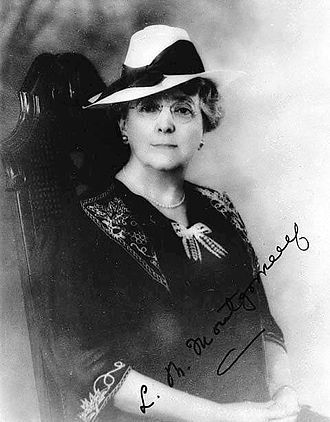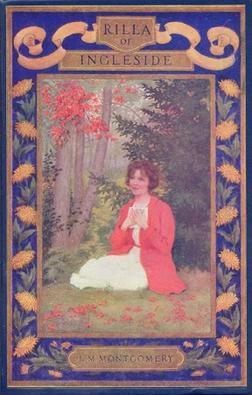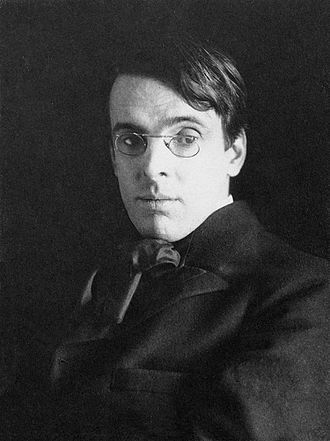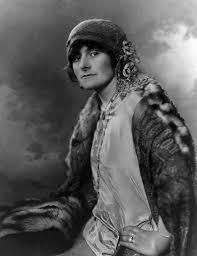W.B. Yeats

In this Monday's episode, Lisa Buggy is joined by Jenny Coughlan and Mark Molloy to discuss the poetry of W.B. Yeats.
Explore " w.b. yeats" with insightful episodes like "W.B. Yeats", "BlogCast #17 - Someone Called Me By My Name - Diagnosed Mortal #16 of 20", "Kathleen Raine: Spirituality in William Blake", "The Hundredheaded Rabble" and "1919: A Time of Hope or a Time of Dread?" from podcasts like ""The English Pod", "Different Ways", "The Lindisfarne Tapes", "Blooms & Barnacles" and "The Year That Was"" and more!

In this Monday's episode, Lisa Buggy is joined by Jenny Coughlan and Mark Molloy to discuss the poetry of W.B. Yeats.

Thoughts about the wandering peoples of the world and what it might mean if everyone is really homeless.
The Riff aspect of these postings can be found on the blog allthedifferentways.com where I've composed thoughts and multimedia responses to these poems are posted. Thank you for listening.

The Lindisfarne Tapes are selected recordings of presentations and conversations at the Lindisfarne Fellows’ meetings. In March of 2013 William Thompson granted permission to the Schumacher Center for a New Economics to transfer the talks from the old reel-to-reel tapes to digital format so that they could be posted online and shared freely. In 2021, the Schumacher Center used the digital audio to create the Lindisfarne Tapes Podcast. Reposting should include acknowledgment of williamirwinthompson.org. Learn more about the Lindisfarne Tapes here.

Join Kelly and Dermot for a story about James Joyce's youthful rebellion against the literary establishment of Dublin, his obsession with the apocalyptic predictions of a 12th century monk, a tale of psychic horror by W.B. Yeats, Jonathan Swift and Dublin's oldest public library. It's a jam-packed episode!
Bonus: Dermot interviews Kelly about completing her blog series about "Proteus." Check out those blog posts here.
Double Bonus: The difference between Elisha and Elijah from Chuck Knows Church.
Sweny's Patreon helps keep this marvelous Dublin landmark afloat. Please subscribe!
On the blog:
Social Media:
Subscribe to Blooms and Barnacles:
iTunes| Google Play Music| Stitcher
Texts Mentioned in this Episode:
The Tables of the Law by W.B. Yeats
The Day of the Rabblement by James Joyce
Further Reading:
Ellmann, R. (1959). James Joyce. New York: Oxford University Press.
Fargnoli, A.N., & Gillespie M.P. (1995). James Joyce A to Z: The essential reference to his life and writings. New York: Oxford University Press. Retrieved from http://tinyurl.com/y4l26tc7
Gilbert, S. (1955). James Joyce’s Ulysses: a study. New York: Vintage Books.
Gifford, D., & Seidman, R. J. (1988). Ulysses annotated: Notes for James Joyce's Ulysses. Berkeley: University of California Press.
Gogarty, O. (1948). Mourning became Mrs. Spendlove and other portraits grave and gay. New York: Creative Age Press.
Greer, J.M. History’s Arrow. The Archdruid Report. Retrieved from http://archdruidmirror.blogspot.com/2017/06/historys-arrow.html
Hart, M. F. (1994). The Sign of Contradiction: Joyce, Yeats and ‘The Tables of Law.’ Colby Quarterly, 30 (4), 237-243. Retrieved from https://digitalcommons.colby.edu/cgi/viewcontent.cgi?referer=https://www.google.com/&httpsredir=1&article=3034&context=cq.
Joyce, J. (2018). Critical writings. Mineola, New York: Dover Publications.
Joyce, S. (1958). My brother’s keeper: James Joyce’s early years. New York: The Viking Press.
McGinn, B. Apocalypticism explained: Joachim of Fiore. Frontline. Retrieved from https://www.pbs.org/wgbh/pages/frontline/shows/apocalypse/explanation/joachim.html
Music

 Lucy Maud Montgomery became one of Canada's most successful and beloved authors with the publication of the Anne of Green Gables series. After Montgomery lived through World War I, she decided to recount the war years through the eyes of Anne's teenage daughter. The result is Rilla of Ingleside.
Lucy Maud Montgomery became one of Canada's most successful and beloved authors with the publication of the Anne of Green Gables series. After Montgomery lived through World War I, she decided to recount the war years through the eyes of Anne's teenage daughter. The result is Rilla of Ingleside.
 This is the cover of the first edition of Rilla of Ingleside, and it's almost unbearably sweet. The book itself has plenty of sappy moments, but it doesn't shy away from the enormous grief and anxiety experienced by families with sons in the war.
Rilla of Ingleside is available in numerous editions, and I've linked to one on Amazon at the bottom of the page. Or you can listen via LibriVox (https://librivox.org/rilla-of-ingleside-by-lucy-maud-montgomery/), a service that records books in the public domain; I used the LibraVox recording, by Karen Savage, in this episode.
This is the cover of the first edition of Rilla of Ingleside, and it's almost unbearably sweet. The book itself has plenty of sappy moments, but it doesn't shy away from the enormous grief and anxiety experienced by families with sons in the war.
Rilla of Ingleside is available in numerous editions, and I've linked to one on Amazon at the bottom of the page. Or you can listen via LibriVox (https://librivox.org/rilla-of-ingleside-by-lucy-maud-montgomery/), a service that records books in the public domain; I used the LibraVox recording, by Karen Savage, in this episode.
 Lieutenant Colonel John McCrae was a Canadian poet, physician and author. He served as a battefield surgeon during the Second Battle of Ypres in 1915, treating the wounded in a 8-foot by 8-foot bunker dug into a dyke along the Yser canal. During the battle, McCrae's good friend Lt. Alexis Helmer was killed. After attending Helmer's funeral, McCrae wrote the poem "In Flander's Fields." It was published in December 1915 and soon became one of the most popular verses of the war.
McCrae writes in the poem about the poppies that he saw growing in Flanders; poppies are the first flowers that bloom in the churned-up earth of battlefields. The enormous popularity of the poem led directly to the poppy being adopted as a symbol of remembrance. Initially, poppies were used only in commemoration of the Great War, but over time they came to represented all lost in battle. Many people wear poppies in the first two weeks of November and on Remembrance Day, November 11th, in Australia, Canada, New Zealand, and the United Kingdom.
McCrae did not survive the war. He died on January 28, 1918 of pneumonia.
You can read the entire poem "In Flanders Fields" (https://www.poetryfoundation.org/poems/47380/in-flanders-fields) on the Poetry Foundation website or hear Leonard Cohen read "In Flanders Fields" (https://www.youtube.com/watch?v=cKoJvHcMLfc)
Lieutenant Colonel John McCrae was a Canadian poet, physician and author. He served as a battefield surgeon during the Second Battle of Ypres in 1915, treating the wounded in a 8-foot by 8-foot bunker dug into a dyke along the Yser canal. During the battle, McCrae's good friend Lt. Alexis Helmer was killed. After attending Helmer's funeral, McCrae wrote the poem "In Flander's Fields." It was published in December 1915 and soon became one of the most popular verses of the war.
McCrae writes in the poem about the poppies that he saw growing in Flanders; poppies are the first flowers that bloom in the churned-up earth of battlefields. The enormous popularity of the poem led directly to the poppy being adopted as a symbol of remembrance. Initially, poppies were used only in commemoration of the Great War, but over time they came to represented all lost in battle. Many people wear poppies in the first two weeks of November and on Remembrance Day, November 11th, in Australia, Canada, New Zealand, and the United Kingdom.
McCrae did not survive the war. He died on January 28, 1918 of pneumonia.
You can read the entire poem "In Flanders Fields" (https://www.poetryfoundation.org/poems/47380/in-flanders-fields) on the Poetry Foundation website or hear Leonard Cohen read "In Flanders Fields" (https://www.youtube.com/watch?v=cKoJvHcMLfc)
 William Butler Yeats was no doubt a brilliant poet, but he had a bad habit of falling in love with beautiful, tormented, unattainable women. He decided to leave all of them behind in 1917 and marry someone "serviceable" instead.
William Butler Yeats was no doubt a brilliant poet, but he had a bad habit of falling in love with beautiful, tormented, unattainable women. He decided to leave all of them behind in 1917 and marry someone "serviceable" instead.
 Georgie Hyde-Lees, soon to be George Yeats, was the "serviceable" woman Yeats chose. She was smart, capable and self-effacing--and saved her marriage when she discovered her "gift" for automatic writing.
Georgie Hyde-Lees, soon to be George Yeats, was the "serviceable" woman Yeats chose. She was smart, capable and self-effacing--and saved her marriage when she discovered her "gift" for automatic writing.
 This is another view of George, in a painting titled Mrs. W.B. Yeats by the artist and illustrator Edmund Dulac. Dulac is best remembered for his illustrations for children's books, including fairy tales and The Arabian Nights. (I had a copy of his illustrated Stories from Hans Christian Anderson and have a vivid memory of his drawing for "The Princess and the Pea" of a huge stack of mattresses.) Dulac and Yeats were close friends and occassional collaborators. Dulac places George in a fairy tale setting, with a charging unicorn in the background. Yeats must have loved it.
You can read the entire poem "The Second Coming" (https://www.poetryfoundation.org/poems/43290/the-second-coming) on the Poetry Foundation website. Or check out actor Dominic West reading it (https://www.youtube.com/watch?v=QI40j17EFbI) in a production for Irish public broadcasting service RTE.
Research Notes
I referred to several biographies of Yeats, including the following:
Keith Aldritt, W.B. Yeats: The Man and the Milieu. New York: Clarkson Potter. 1997.
R.F. Foster, W.B. Yeats: A Life II: The Arch-Poet, 1915-1939. Oxford: Oxford University Press. 2003
A. Norman Jeffares, W.B. Yeats: A New Biography. London: Continuum. 2001
I also consulted the one biography of George Yeats:
* Ann Saddlemeyer, Becoming George: The Life of Mrs. W.B. Yeats. Oxford: Oxford University Press. 2002.
This is another view of George, in a painting titled Mrs. W.B. Yeats by the artist and illustrator Edmund Dulac. Dulac is best remembered for his illustrations for children's books, including fairy tales and The Arabian Nights. (I had a copy of his illustrated Stories from Hans Christian Anderson and have a vivid memory of his drawing for "The Princess and the Pea" of a huge stack of mattresses.) Dulac and Yeats were close friends and occassional collaborators. Dulac places George in a fairy tale setting, with a charging unicorn in the background. Yeats must have loved it.
You can read the entire poem "The Second Coming" (https://www.poetryfoundation.org/poems/43290/the-second-coming) on the Poetry Foundation website. Or check out actor Dominic West reading it (https://www.youtube.com/watch?v=QI40j17EFbI) in a production for Irish public broadcasting service RTE.
Research Notes
I referred to several biographies of Yeats, including the following:
Keith Aldritt, W.B. Yeats: The Man and the Milieu. New York: Clarkson Potter. 1997.
R.F. Foster, W.B. Yeats: A Life II: The Arch-Poet, 1915-1939. Oxford: Oxford University Press. 2003
A. Norman Jeffares, W.B. Yeats: A New Biography. London: Continuum. 2001
I also consulted the one biography of George Yeats:
* Ann Saddlemeyer, Becoming George: The Life of Mrs. W.B. Yeats. Oxford: Oxford University Press. 2002.

Stay up to date
For any inquiries, please email us at hello@podcastworld.io